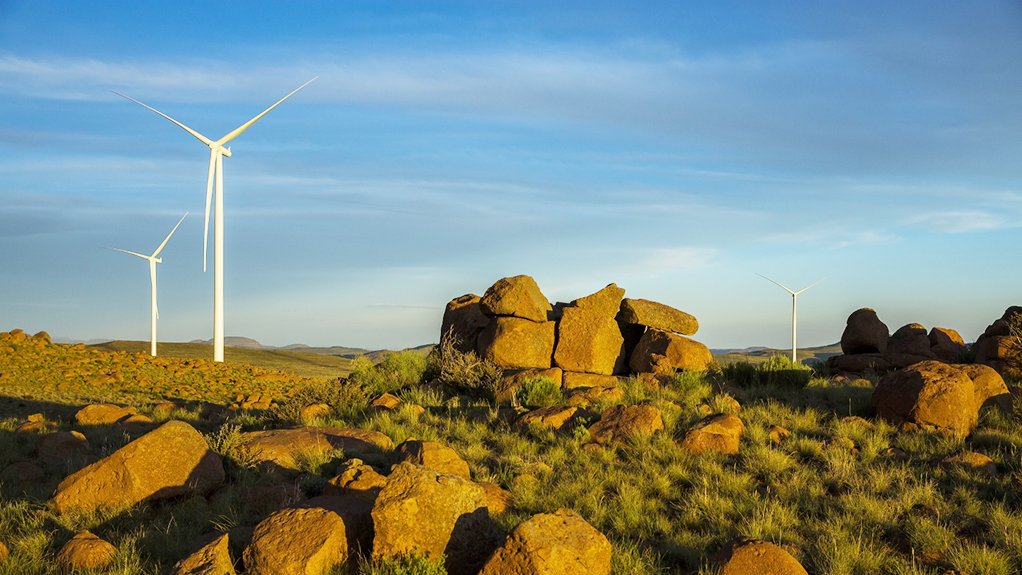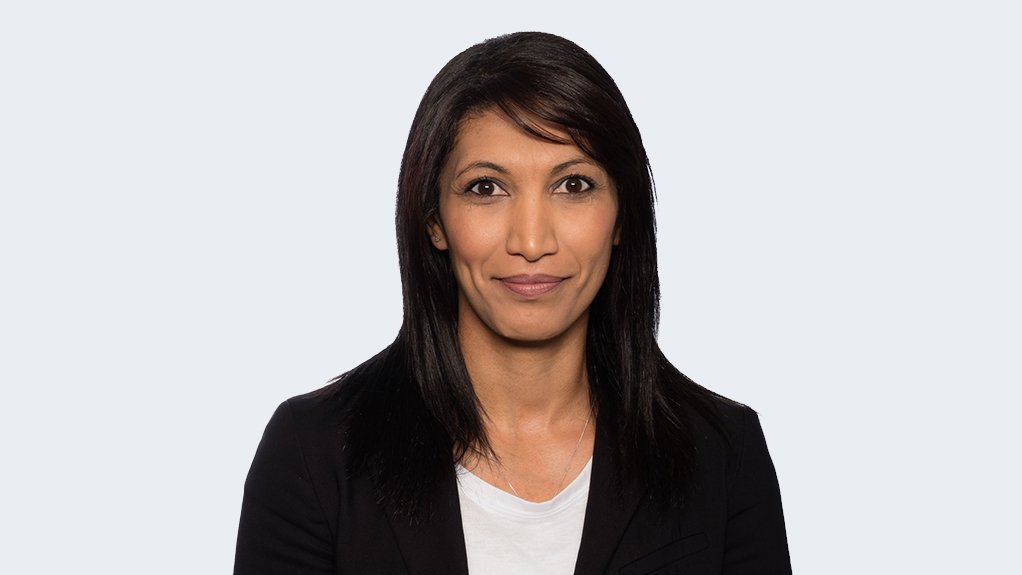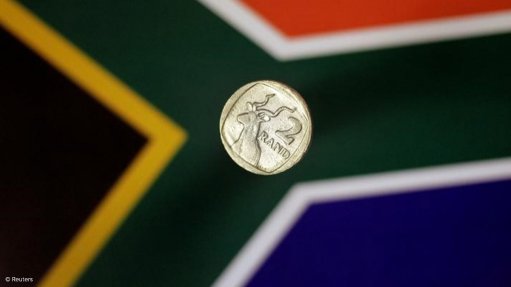Wind energy push could help turbocharge SA’s economic recovery




WINDY EXPECTATIONS Policy will need to be implemented consistently to meet energy planning targets
MERCIA GRIMBEEK Wind energy production is considered an ‘excellent vehicle’ for direct infrastructure investment
The restart of the Renewable Energy Independent Power Producer Procurement Programme’s (REIPPPP’s) Bid Window 5 (BW5), following a considerable hiatus, has brought with it substantial investment and commitment.
This demonstrates that developers can address the electricity-generation needs of the country and climate change commitments, says the South Africa Wind Energy Association (SAWEA).
However, construction and manufacturing have lagged somewhat, with SAWEA chairperson Mercia Grimbeek noting that, in the short term, local-content targets have been “challenging to increase and meet”.
“The historical stop-start roll-out of the renewable procurement rounds has had a negative impact on the ability to procure locally manufactured goods and, in certain instances, the manufacturers are no longer in business,” she laments.
To address this challenge in the medium to long term, she suggests that two measures be actioned.
Firstly, “consistent procurement of renewable energy is required” – as the Department of Mineral Resources and Energy has committed too – to ensure a procurement pipeline.
Secondly, a more coordinated engagement between industry stakeholders and the Department of Trade, Industry and Competition would enable the wind energy industry to better align the required increase in local content with capacity with every consecutive procurement round.
Other considerations pertain to specific technologies in the renewable-energy mix. For example, taller wind towers can create an increasing number of opportunities for local content, as the first section of the tower will be constructed from concrete and the balance from steel, and will likely be sourced from surrounding communities.
However, higher prices, as a result of the direct impact of Covid-19, might potentially influence the overall mix.
One of the changes in the BW5 bidding requirements is the price-versus-economic- development weighting in evaluation, which has changed from a 70:30 weighting to a 90:10 weighting, indicating a distinct emphasis on tariff.
Black women ownership in the project company is a new requirement and has a 5% threshold, with all other economic development requirements stipulated in BW4 having been retained.
Grimbeek explains that, in previous rounds, the REIPPPP used a 70:30 weighting, attaching higher priority to economic development objectives than the typical government structure of 90:10 at the time.
Weighting relates to the score given against each criteria in a bidding/tender process.
Just Energy Transition
Meanwhile, training in the wind sector is conducted by independent power producers (IPPs) and original-equipment manufacturers.
As the industry expands, training needs will increase to service demand, especially on operational assets, and as the sector increases its local content, the requirement for additional training is likely to expand to the manufacturing sector.
“This is key, as we address the need for reskilling in light of a ‘just energy transition’,” Grimbeek adds.
The just energy transition is a transition towards a sustainable, low-carbon and equitable energy system which is better for people and the planet and provides support for workers, communities and businesses that are vulnerable to the shift.
South Africa, in particular, needs to transition from being largely coal-based to relying on renewable-energy sources.
The ‘just’ component of this transition requires that legislation and policy be in place to protect workers in legacy energy systems where jobs are at risk, with adequate resources required to enable a transformative energy transition that truly benefits people and protects the environment.
Renewable-energy development zones (REDZ) also have a key role to play in South Africa’s Just Energy Transition, as they will create priority areas for investment in the electricity grid, thereby increasing South Africa’s green energy portfolio by allowing for higher levels of renewable power penetration.
Grimbeek says wind developers are investigating the potential for development in the eMalahleni REDZ, despite the Mpumalanga province not being known for high levels of wind – a challenge that “can certainly be overcome” with increased turbine hub height.
As the wind industry embarks on a journey of localisation and local economic development, she tells Engineering News that industry players believe that the region can be positioned as a component manufacturing hub, which will further entrench the positive impact on job creation by the wind industry.
“It is recognised that engagement with the relevant government stakeholders is critical,” she says.
SAWEA says the eMalahleni REDZ is a “huge step” towards accelerated economic development in Mpumalanga.
Additionally, as the industry moves to implement the requirements of the Integrated Resource Plan of 2019 (IRP 2019), Grimbeek notes that “it would appear natural that a portion of the 1 600 MW per annum should be allocated to the northern region of the country, and research has dispelled the myth that wind is not an economically viable option in this region”.
Through the implementation of national and even regional auctions, Grimbeek comments that the area could receive the economic stimulus it needs and reduce the almost complete reliance on mining-generated income to drive and support the economy.
Renewable-energy power plants, such as those used to generate energy using wind, are deployed fairly quickly, compared with other large infrastructure projects, she adds, noting that this allows for the economic benefits to flow through to communities in a relatively short period, and not only directly through job creation but also indirectly through manufacturing and supply chain management.
Owing to the large number of energy- intensive users in and around eMalahleni, Grimbeek considers it an ideal location to promote private offtaker agreements for buying energy from IPPs.
The deployment of wind energy, supported by a regulatory regime that supports private power purchase agreements (PPAs), can provide economic stimulus within a short timeframe, she adds.
Hence, the development of the eMalahleni REDZ could be a perfect partnership between government and IPPs, and will further allow for a Just Energy Transition to the benefit of the communities of Mpumalanga, Grimbeek suggests.
Wind energy production is also considered an “excellent vehicle” for direct infrastructure investment and a positive multiplier of economic effects on industries such as construction, procurement, engineering and logistics.
It is believed that, with the provision of a consistent regulatory framework that supports a focused project delivery pipeline, the renewable-energy industry will have the opportunity to expand the manufacturing value chain in this REDZ.
Wind is likely to play a key role in the corporate PPA market, as the ease in regulations allows for faster deployment and it is combined with the newfound ability to sell to multiple offtakers from a single source.
This, Grimbeek says, “makes wind an attractive option in the corporate PPA market”, especially as combining wind energy with solar energy production further reduces the levelised cost of energy, which “makes economic sense to energy-intensive users”.
Power Plans
The increase in renewable-energy capacity has been prioritised in the country’s key planning documents.
Indicative of this is a commitment in the National Development Plan to procuring 30 GW of renewable energy by 2030, which is supported by the IRP 2019, which commits to procuring 14.4 GW of wind by 2030.
This commitment is further supported by the Economic Reconstruction and Recovery Plan, which outlines a plan to accelerate the implementation of the IRP 2019 to provide a substantial increase in the contribution of renewable-energy sources, battery storage and gas technologies.
This economic recovery plan will ensure that South Africa rapidly achieves decarbonisation of its power system over the next decade and beyond, Grimbeek says.
However, she emphasises that the key consideration for achieving net-zero emissions by 2050 is reducing demand for coal resources in the transition of the country’s electricity sector.
“The need to shift from a carbon-intensive power system to more sustainable power generation coincides well with the end of life of the ageing coal power fleet, rendering this transition process a natural and gradual one.”
She notes that, in the long term, the decommissioning of coal plants will increase gradually as they reach their end of life.
The IRP 2019 stipulates a plan to decommission 11 000 MW of coal by 2030, with a further 24 100 MW of coal power expected to be decommissioned between 2030 and 2050.
This capacity will be replaced by a combination of wind, solar photovoltaic, battery storage and gas.
Although the published IRP 2019 has energy plans in place for up to 2030, it is assumed that wind power will constitute an even bigger share of new generation capacity beyond 2030, as the first wind farms will start decommissioning only from 2034.
This, Grimbeek notes, will create a capacity gap that will be closed by building more wind power capacity.
This transition project should result in a total emissions reduction budget for the electricity sector – up to 2050 – of 5.47-billion tonnes of carbon dioxide cumulatively, according to the IRP 2019.
Wind energy is expected to contribute 4.8 GW to the new generation capacity between 2022 and 2024.
“South Africa has become a great case study for the large-scale deployment of renewable energy, and wind power in particular, on the African continent.”
It demonstrates that, with the right combination of policy instruments, a country can successfully develop energy infrastructure and drive economic growth using domestic and foreign investment, promoting socioeconomic development and job creation, while driving down the price of electricity and reducing greenhouse-gas emissions, Grimbeek adds.
However, to meet the energy planning targets, that “policy will need to be implemented consistently”, and will require action from the private and public sectors to be successfully realised.
Government needs to ease the regulatory environment and scale up the implementation of approved policies to create a conducive environment for private-sector investment, she concludes.
Comments
Press Office
Announcements
What's On
Subscribe to improve your user experience...
Option 1 (equivalent of R125 a month):
Receive a weekly copy of Creamer Media's Engineering News & Mining Weekly magazine
(print copy for those in South Africa and e-magazine for those outside of South Africa)
Receive daily email newsletters
Access to full search results
Access archive of magazine back copies
Access to Projects in Progress
Access to ONE Research Report of your choice in PDF format
Option 2 (equivalent of R375 a month):
All benefits from Option 1
PLUS
Access to Creamer Media's Research Channel Africa for ALL Research Reports, in PDF format, on various industrial and mining sectors
including Electricity; Water; Energy Transition; Hydrogen; Roads, Rail and Ports; Coal; Gold; Platinum; Battery Metals; etc.
Already a subscriber?
Forgotten your password?
Receive weekly copy of Creamer Media's Engineering News & Mining Weekly magazine (print copy for those in South Africa and e-magazine for those outside of South Africa)
➕
Recieve daily email newsletters
➕
Access to full search results
➕
Access archive of magazine back copies
➕
Access to Projects in Progress
➕
Access to ONE Research Report of your choice in PDF format
RESEARCH CHANNEL AFRICA
R4500 (equivalent of R375 a month)
SUBSCRIBEAll benefits from Option 1
➕
Access to Creamer Media's Research Channel Africa for ALL Research Reports on various industrial and mining sectors, in PDF format, including on:
Electricity
➕
Water
➕
Energy Transition
➕
Hydrogen
➕
Roads, Rail and Ports
➕
Coal
➕
Gold
➕
Platinum
➕
Battery Metals
➕
etc.
Receive all benefits from Option 1 or Option 2 delivered to numerous people at your company
➕
Multiple User names and Passwords for simultaneous log-ins
➕
Intranet integration access to all in your organisation




















